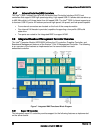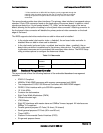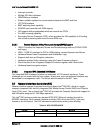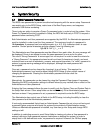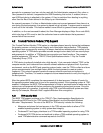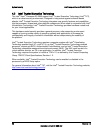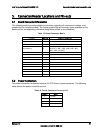
Intel
®
Compute Module MFS2600KI TPS System Security
Revision 1.0 29
Intel order number: G51989-002
Verifies operator physical presence. Confirms and executes operating system TPM
administrative command requests.
Provides BIOS Setup options to change TPM security states and to clear TPM
ownership.
For additional details, refer to the TCG PC Client Specific Implementation Specification, the
TCG PC Client Specific Physical Presence Interface Specification, and the Microsoft BitLocker*
Requirement documents.
4.2.2 Physical Presence
Administrative operations to the TPM require TPM ownership or physical presence indication by
the operator to confirm the execution of administrative operations. The BIOS implements the
operator presence indication by verifying the setup Administrator password.
A TPM administrative sequence invoked from the operating system proceeds as follows:
1. User makes a TPM administrative request through the operating system’s security software.
2. The operating system requests the BIOS to execute the TPM administrative command
through TPM ACPI methods and then resets the system.
3. The BIOS verifies the physical presence and confirms the command with the operator.
4. The BIOS executes TPM administrative command(s), inhibits BIOS Setup entry and boots
directly to the operating system which requested the TPM command(s).
4.2.3 TPM Security Setup Options
The BIOS TPM Setup allows the operator to view the current TPM state and to carry out
rudimentary TPM administrative operations. Performing TPM administrative options through the
BIOS setup requires TPM physical presence verification.
Using BIOS TPM Setup, the operator can turn ON or OFF TPM functionality and clear the TPM
ownership contents. After the requested TPM BIOS Setup operation is carried out, the option
reverts to No Operation.
The BIOS TPM Setup also displays the current state of the TPM, whether TPM is enabled or
disabled and activated or deactivated. Note that while using TPM, a TPM-enabled operating
system or application may change the TPM state independent of the BIOS setup. When an
operating system modifies the TPM state, the BIOS Setup displays the updated TPM state.
The BIOS Setup TPM Clear option allows the operator to clear the TPM ownership key and
allows the operator to take control of the system with TPM. You use this option to clear security
settings for a newly initialized system or to clear a system for which the TPM ownership security
key was lost.




